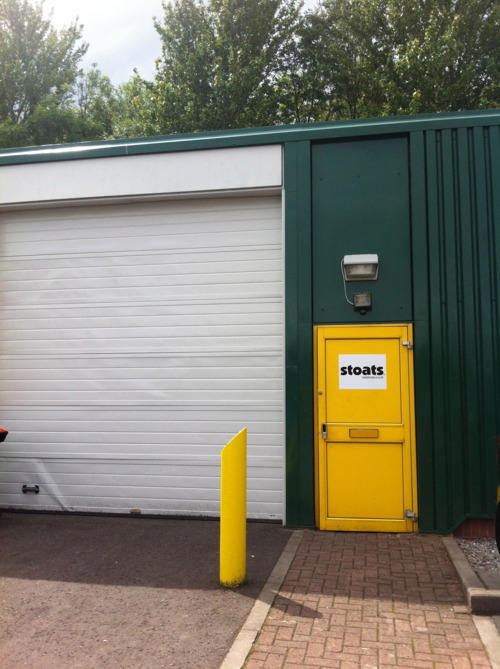Person: Tony Stone
Drink: Office brewed coffee in Edinburgh, Scotland
.
Cup 44: Tony Stone
Don’t be afraid to change directions.
That was my mentality going into my Europe adventure and the reason I ended up in Scotland.
My flight back to the States was out of London so I decided that’s where I would spend the last four days of my trip. However, when a friend from MSU emailed me to say she was going to be in Scotland for the TED Global conference I decided to revise my plan. I’d spend two days in Edinburgh before taking the short train ride to London for my last two days.
… I was weary from travel when I rolled into Scotland at 10:30 pm but the beauty of the castle-lined landscape resting under a crescent moon restored my energy (finally understanding the local language also helped). After pausing to take a few photos and take in the moment, I headed toward the hostel I’d booked, making a quick stop inside a convenience store along the way for late-night snack.
I was weary from travel when I rolled into Scotland at 10:30 pm but the beauty of the castle-lined landscape resting under a crescent moon restored my energy (finally understanding the local language also helped). After pausing to take a few photos and take in the moment, I headed toward the hostel I’d booked, making a quick stop inside a convenience store along the way for late-night snack.
It was the bold green packaging on the Stoats Porridge Oat Bar that caught my attention.
After looking at the package, I discovered it was produced locally in Edinburgh. Because I’d never knowingly tried porridge, I figured it was my responsibility as an adventurous traveler to try the local food.
It was a smart choice—I loved the bar and later ran a Google search to see if the bars were available in the States. The search naturally led me to the Stoats website where I read about the offbeat origins of the company. It was a fascinating story (filled with delightful British vernacular) so the next morning I decided to email the company to see if I could grab coffee with co-founder Tony Stone.
Growing up I preferred business magazines like Inc. and Fast Company over Cosmo and Vogue (which may explain why I never know if my shoes go with my outfit, but I digress) so I was excited when Tony responded within in the hour and we set up a meeting for later that afternoon.
… When I arrived at the Stoats headquarters in the outskirts of the city I wasn’t sure I was in the right spot. But then I noticed the small white Stoats sign on a door nestled between a handful of larger manufacturing shops. I cautiously opened turned the handle and walked inside to find a simple setting—large bags of raw oats, stacks of cardboard boxes, various flyers on the walls. Basically what you would expect from a manufacturing plant if they spent any time imagining what a manufacturing plant might look like.
When I arrived at the Stoats headquarters in the outskirts of the city I wasn’t sure I was in the right spot. But then I noticed the small white Stoats sign on a door nestled between a handful of larger manufacturing shops. I cautiously opened turned the handle and walked inside to find a simple setting—large bags of raw oats, stacks of cardboard boxes, various flyers on the walls. Basically what you would expect from a manufacturing plant if they spent any time imagining what a manufacturing plant might look like.
Tony heard me enter and yelled hello from inside his office down the hallway before coming out to meet me. He was tall, lanky, and personable with his relaxed disposition and friendly Scottish accent. We walked into the office he shared with two other employees. Tony apologized for the disorder—piles of and promotional material and files lined his desk, random boxes of product samples strewn about—and lack of quality coffee. I told him I didn’t mind, after seven weeks on the road, you’re used to the disorder.
…
My first question was simple: what exactly is porridge?
My limited knowledge of porridge it that it’s eaten by bears and stolen by blondes. As it turns out, porridge is just oatmeal by another name. With that mystery solved I was ready for trickier questions, but first Tony wanted to know more about my project. I understood where he was coming from, it’s not often you run into a young college grad meandering through Europe sending unsolicited emails to food manufacturers.
So I explained my story and then he jumped into his, which—much like mine—had some unexpected revisions.
Tony had always entertained the idea of starting his own company but took a job with a big company after graduating with a business degree. It was a good job, but he realized he missed Edinburgh and wanted to be closer to his family—it seemed like the right time to jump into the entrepreneurial world, but he wasn’t sure in what capacity.
That changed the day he and his friend Bob went to a music festival. I like how their website explains it:
Stoats began with an idea in 2004 to serve fresh porridge at music festivals. We listened to our mates moan and groan about what they had to eat to survive at music festivals. We knew that porridge would make a healthy, filling and tasty eating option, so we decided porridge was the future (and quite a cool way to spend the summer). Bob and Tony got a shiny wee mobile porridge bar and started selling freshly made porridge right across the UK, and festival audiences loved it (and still do - look for the biggest queue at breakfast and you’ve found Stoats Porridge).
In 2004, porridge was getting a lot of attention in the press—it’s one Scotland’s best exports and was an especially trendy food at the time. Tony and Bob saw an opportunity and decided to capitalize on it.
Then they decided to take it one more step—they would set up a small store where they’d sell porridge year round. But life intervened. When they approached the bank for a loan they weren’t able to get as much as they requested (Tony later explained it’s difficult for entrepreneurs to get support in Britain).
But it didn’t stop them, they just reevaluated the plan and decided to stick with selling bowls of fresh porridge to festival goers—advertising their product with a big banner alongside the truck that read:
STOATS PORRIDGE BAR
Their decision worked, business was booming—and, although they didn’t see it, about to change directions again.
Many of their customers were misunderstanding what PORRIDGE BAR meant. While the banner implied the type of bar synonymous with buffet, table, counter, etc., many concert goers thought they Stoats sold bars of porridge—like granola bars. The thought had never occurred to Tony and Bob but they figured if that’s what their customers wanted that’s what they should sell.
After a little experimenting in the kitchen the original Stoats Porridge Bar was born and became an instant hit. Now, in addition to their mobile trucks, Stoats sells eight flavors of oat bars and a half dozen other oat products both online and in stores across Scotland (and very soon some parts of the US).
And hearing Tony’s firsthand account of the company’s growth it became clear that it was their ability to be flexible and willingness to try new things that allowed them to develop a successful business that continues to grow. It’s a lot like my Europe trip—I had a plan, but it wasn’t so concrete I couldn’t revise when a better opportunity arose.
That’s not easy to do.
Changing direction can be scary. Especially if you’ve taken a lot of time devising the plan.
But the thing is—you can’t predict life. If you think you have total control over your plan, you’re setting yourself up for failure because something unexpected will inevitable occur.
However, if you accept that life will throw you curve balls (both good and bad) the unexpected moments can turn into the greatest opportunities. Had Tony and Bob been dead set on sticking to the plan, the lack of funding from the bank could have completely derailed their plans. Or they could have ignored their customers and neglected the opportunity to take their business in a new, and better, direction.
When I asked Tony what the greatest lessons he’s learned in the past five years was he told me this:
Start small.
He said oftentimes the idea they are most excited about ends up going nowhere while the sub part idea becomes an unexpected hit. That’s why when they roll out something new they try it in a small batch and, if it works, they roll it out to the whole market.
It makes sense. They know they won’t get it right the first time, every time. Starting small allows them to stay agile and flexible in case the plan doesn’t work or a better opportunity emerges. And if the plan fails completely the company only suffers a small loss and can recover quickly. Starting small allows them to take smart risks.
Take enough small risks and you’ll start to see big change.
It’s a smart strategy; much better than devising a grand scheme and then aborting it at the first sign it won’t work out. I’ve unfortunately seen that happen a lot.
Tony and Bob could have set out to develop an international retailing business. But they didn’t. They had a small idea that worked so they took another small risk, then another, then another. Now they’ve got an international retailing business.
…
I was thinking about that while walking home from the Stoats Headquarters.
A year ago I didn’t plan to be drinking coffee in Europe. I just wanted to meet people in the city where I lived so I took a risk and invited a stranger to coffee. It worked, so I kept at it until one thing led to another and I ended up in Scotland surrounded by beautiful scenery and wonderful people—drinking coffee with strangers.
And that’s what I’ll take away from Cup 44. While it is important to plan ahead, success does not require some big, elaborate, scheme.
It requires the courage to take that first step.
And then another.
And then another.
If you can do that, life will take you to incredible—and deliciously unexpected—places.
.